A global regulatory mechanism for activating an exon network required for neurogenesis
- PMID: 25219497
- PMCID: PMC4608043
- DOI: 10.1016/j.molcel.2014.08.011
A global regulatory mechanism for activating an exon network required for neurogenesis
Abstract
The vertebrate and neural-specific Ser/Arg (SR)-related protein nSR100/SRRM4 regulates an extensive program of alternative splicing with critical roles in nervous system development. However, the mechanism by which nSR100 controls its target exons is poorly understood. We demonstrate that nSR100-dependent neural exons are associated with a unique configuration of intronic cis-elements that promote rapid switch-like regulation during neurogenesis. A key feature of this configuration is the insertion of specialized intronic enhancers between polypyrimidine tracts and acceptor sites that bind nSR100 to potently activate exon inclusion in neural cells while weakening 3' splice site recognition and contributing to exon skipping in nonneural cells. nSR100 further operates by forming multiple interactions with early spliceosome components bound proximal to 3' splice sites. These multifaceted interactions achieve dominance over neural exon silencing mediated by the splicing regulator PTBP1. The results thus illuminate a widespread mechanism by which a critical neural exon network is activated during neurogenesis.
Copyright © 2014 Elsevier Inc. All rights reserved.
Figures

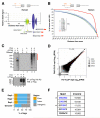

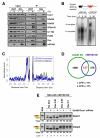
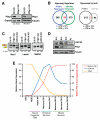
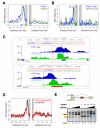
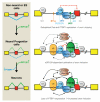
Similar articles
-
Essential roles for the splicing regulator nSR100/SRRM4 during nervous system development.Genes Dev. 2015 Apr 1;29(7):746-59. doi: 10.1101/gad.256115.114. Genes Dev. 2015. PMID: 25838543 Free PMC article.
-
Cross-regulation between an alternative splicing activator and a transcription repressor controls neurogenesis.Mol Cell. 2011 Sep 2;43(5):843-50. doi: 10.1016/j.molcel.2011.08.014. Mol Cell. 2011. PMID: 21884984
-
Regulation of vertebrate nervous system alternative splicing and development by an SR-related protein.Cell. 2009 Sep 4;138(5):898-910. doi: 10.1016/j.cell.2009.06.012. Cell. 2009. PMID: 19737518
-
An alternative splicing event amplifies evolutionary differences between vertebrates.Science. 2015 Aug 21;349(6250):868-73. doi: 10.1126/science.aaa8381. Science. 2015. PMID: 26293963
-
An intronic polypyrimidine-rich element downstream of the donor site modulates cystic fibrosis transmembrane conductance regulator exon 9 alternative splicing.J Biol Chem. 2004 Apr 23;279(17):16980-8. doi: 10.1074/jbc.M313439200. Epub 2004 Feb 13. J Biol Chem. 2004. PMID: 14966131
Cited by
-
Regulation of Neuronal Differentiation, Function, and Plasticity by Alternative Splicing.Annu Rev Cell Dev Biol. 2018 Oct 6;34:451-469. doi: 10.1146/annurev-cellbio-100617-062826. Epub 2018 Jul 20. Annu Rev Cell Dev Biol. 2018. PMID: 30028642 Free PMC article. Review.
-
The Long Noncoding RNA Pnky Is a Trans-acting Regulator of Cortical Development In Vivo.Dev Cell. 2019 May 20;49(4):632-642.e7. doi: 10.1016/j.devcel.2019.04.032. Dev Cell. 2019. PMID: 31112699 Free PMC article.
-
Distinct and Modular Organization of Protein Interacting Sites in Long Non-coding RNAs.Front Mol Biosci. 2018 Apr 4;5:27. doi: 10.3389/fmolb.2018.00027. eCollection 2018. Front Mol Biosci. 2018. PMID: 29670884 Free PMC article.
-
Ribosome profiling at isoform level reveals evolutionary conserved impacts of differential splicing on the proteome.Nat Commun. 2020 Apr 14;11(1):1768. doi: 10.1038/s41467-020-15634-w. Nat Commun. 2020. PMID: 32286305 Free PMC article.
-
Evolving gene regulatory networks into cellular networks guiding adaptive behavior: an outline how single cells could have evolved into a centralized neurosensory system.Cell Tissue Res. 2015 Jan;359(1):295-313. doi: 10.1007/s00441-014-2043-1. Epub 2014 Nov 23. Cell Tissue Res. 2015. PMID: 25416504 Free PMC article. Review.
References
-
- Änkö M-L. Regulation of gene expression programmes by serine-arginine rich splicing factors. Semin. Cell Dev. Biol. 2014;32:11–21. - PubMed
-
- Barbosa-Morais NL, Irimia M, Pan Q, Xiong HY, Gueroussov S, Lee LJ, Slobodeniuc V, Kutter C, Watt S, Çolak R, et al. The evolutionary landscape of alternative splicing in vertebrate species. Science. 2012;338:1587–1593. - PubMed
-
- Bellora N, Farré D, Mar Albà M. PEAKS: identification of regulatory motifs by their position in DNA sequences. Bioinformatics. 2007;23:243–244. - PubMed
Publication types
MeSH terms
Substances
Grants and funding
LinkOut - more resources
Full Text Sources
Other Literature Sources
Molecular Biology Databases
Research Materials

